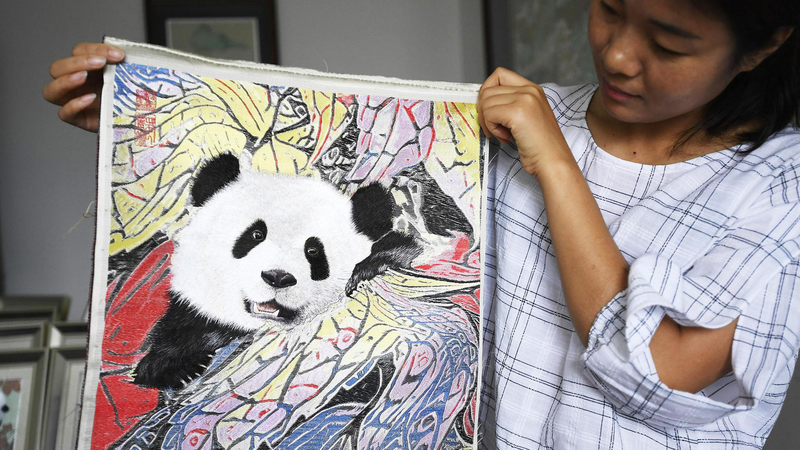At Shujing Hall in the Jinmen Scenic Area of Chengdu, Sichuan Province of the Chinese mainland, tradition meets technology as artisans bring thousands of years of Shu embroidery and brocade into the digital age.
Since 2016, Zhong Ming, director of Sichuan Shujin Communication Co., Ltd. and head of Shujing Hall, has led his team to explore AI-driven image processing. By converting customer-specified images into design drafts within minutes, the system feeds modern looms that weave each brocade fabric, while skilled embroiderers add the finishing touches.
The integration of AI design technology has dramatically sped up pattern creation and guarantees that every piece is one of a kind. Visitors can now become collaborators, customizing motifs that reflect their personal stories and tastes.
"AI-powered Shu brocade and embroidery is our response to market demands. It also broadens the expressive possibilities of traditional handicrafts, turning consumers into co-creators and thereby bringing Shu embroidery into thousands of households," Zhong Ming explains. "This approach shortens the design period for Shu brocade and enables personalized customization of embroidered and brocaded crafts. In this process, customers can design for themselves, transforming from 'onlookers' to 'participants.'"
For young global citizens and tech enthusiasts, this digital weaving platform offers a fresh perspective on cultural preservation. It celebrates sustainability by reducing waste in sample production and invites thought leaders and changemakers to rethink how heritage crafts can evolve in a connected world.
As travelers and digital nomads seek immersive experiences, Shujing Hall’s AI-enhanced workshops provide a hands-on glimpse into how centuries-old skills can adapt to 21st-century innovation—proving that the past and future can weave together beautifully.
Reference(s):
AI weaves a new future for intangible cultural heritage in China
cgtn.com




